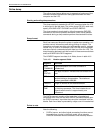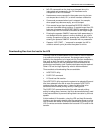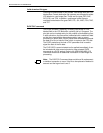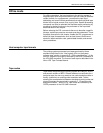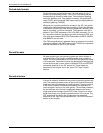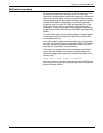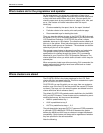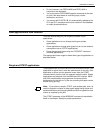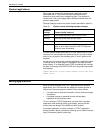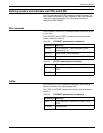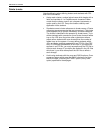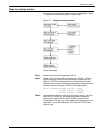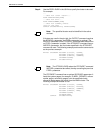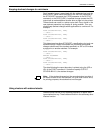
DEFINING CLUSTERS
5-2 XEROX DOCUPRINT 180 LPS PDL REFERENCE
What clusters do for the programmer and operator
As the programmer, you group any combination of trays into a
cluster. Group the trays together because they hold the same stock
or they hold stock which differs only in size. You can specify the
cluster’s paper stock by any combination of weight, color, size, and
so on. Use clusters to include instructions within the report
identifying:
• Clusters needed by the report, that is, the report "stockset"
• Particular cluster to be used to print each particular page
• Recommended trays for loading the stock.
Then you store the defined clusters in the CLUSTR.LIB file through
the cluster (CLP or CLU) commands described in your
DocuPrint 180
LPS Operations Reference
. CLUSTR.LIB, the printer’s cluster
database, stores up to 159 clusters. The clusters can be called by all
jobs run on the system. Since jobs often require various stocks, you
also define cluster groups as “stocksets.” The stocksets can also be
called by all jobs run on the system.
The operator uses clusters to decrease how often you load stocks.
The operator verifies job and cluster status and overrides tray
specifications for clusters through the cluster (CLU) commands
described in your
DocuPrint 180 LPS Operations Reference
. The
cluster definitions inform you which stocks to load in which trays for
queued jobs.
When an operator loads trays without entering CLU commands, the
system assumes that the trays have been refilled and no cluster
changes have occurred.
Where clusters are stored
The CLUSTR.LIB file is the cluster database for the LPS. Each
cluster definition is a record in the file. This file is created when a print
job is run and no CLUSTR.LIB exists.
CLUSTR.LIB is a user file which you can copy from one system to
another, even if the first LPS has trays which the second LPS does
not have. (The trays not in the second system are deleted from the
cluster definitions which reference them.)
The default CLUSTR.LIB created contains definitions for the MAIN,
AUX, and AUTO clusters. These clusters can be used as they are or
modified before use, but they cannot be deleted:
• MAIN is predefined as tray 1
• AUX is predefined as tray 2
• AUTO is predefined as trays 1, 2, 3
The print description language OUTPUT command FEED parameter
is valid with FEED=MAIN and FEED=AUX because the system
defines the MAIN and AUX trays as clusters to support backwards
compatibility. Both clusters are always active regardless of whether
they are specified in the active stockset.
Note the following:



